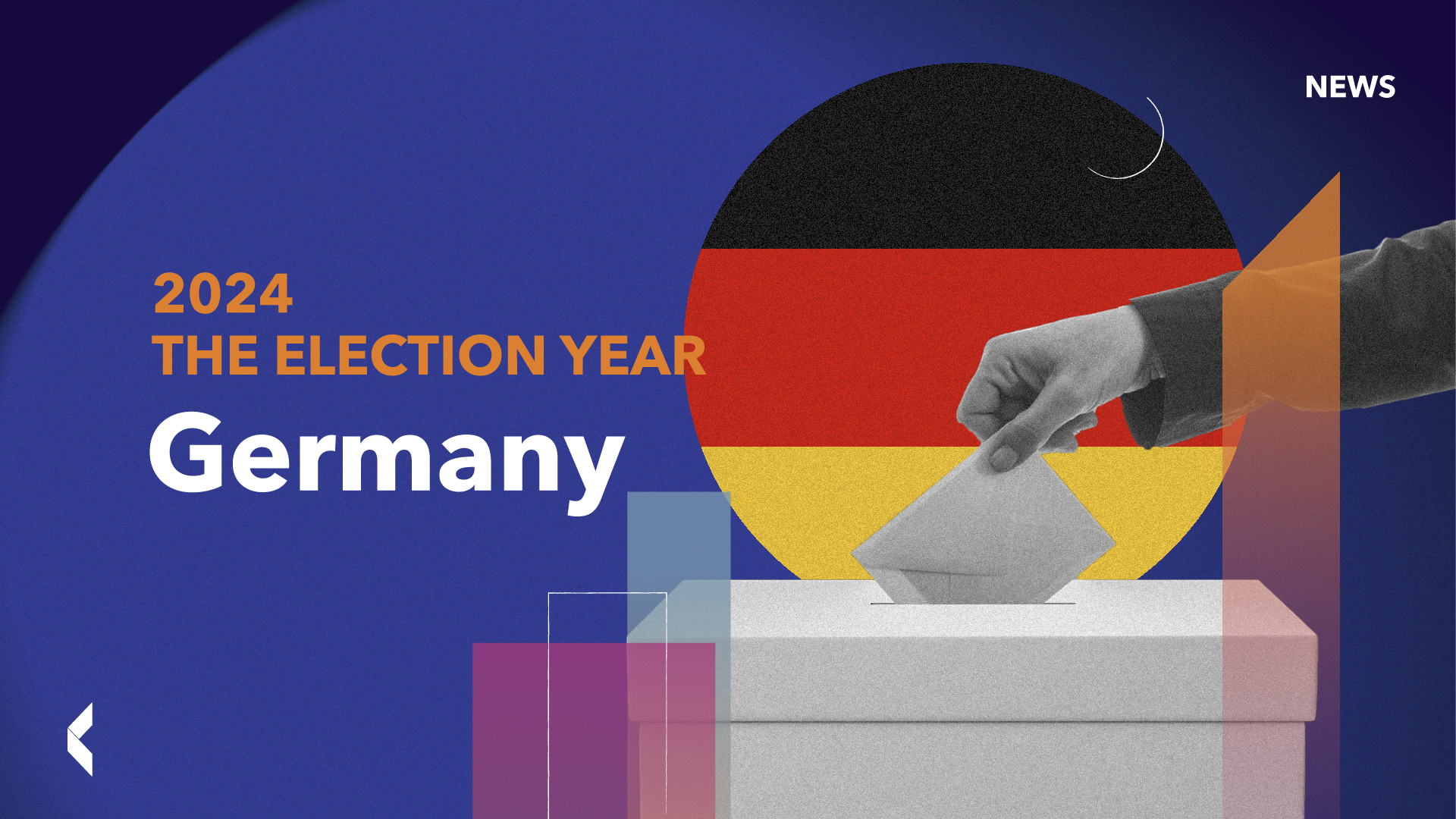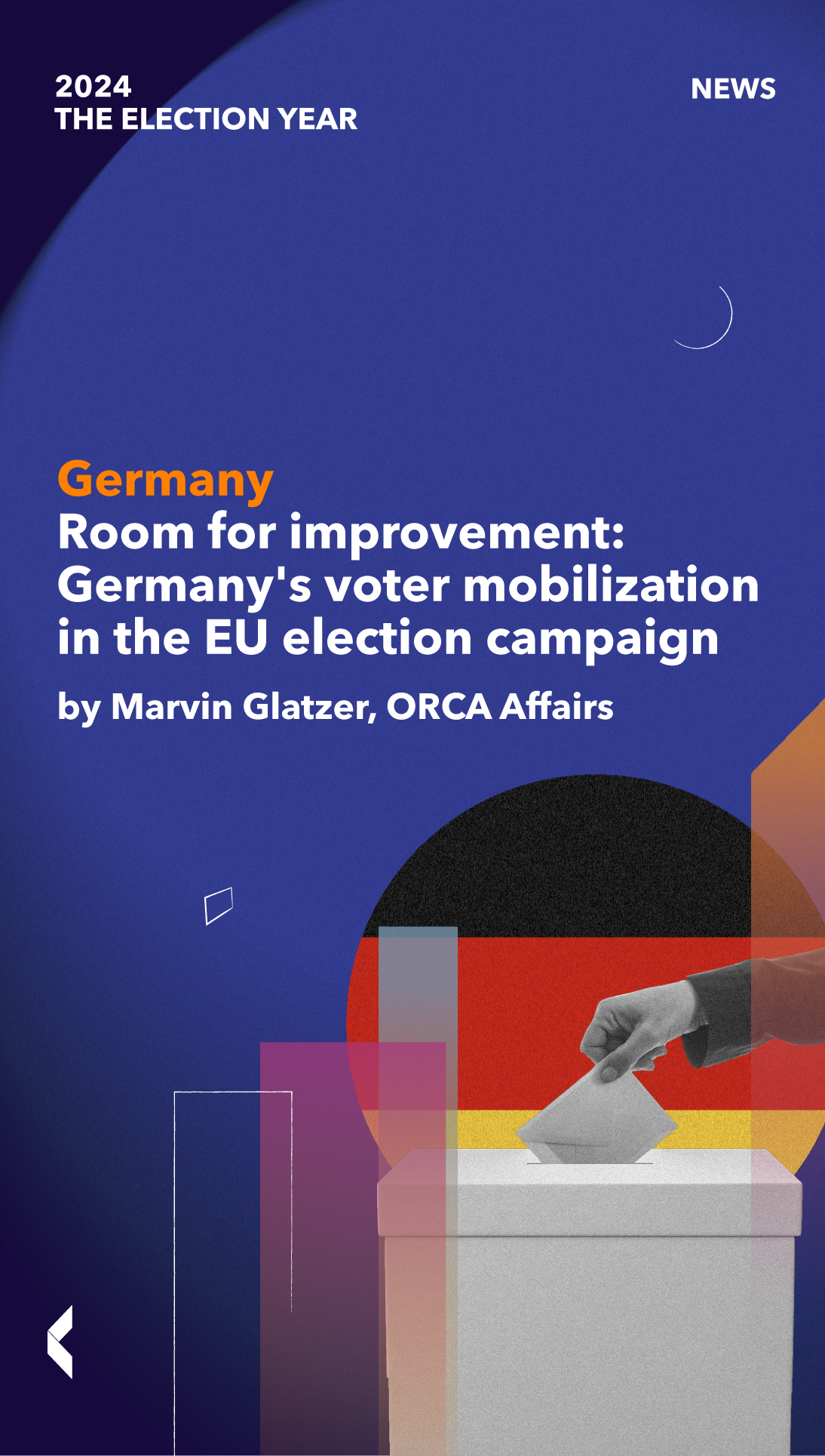About the Author
Marvin Glatzer
The upcoming EU elections need an effective Taylor-Swift-Bonus. In January 2024, the Commission appealed to the globally famous pop star to motivate young voters for the upcoming election in June. In the USA, after a similar call from Swift last year, 35,000 young Americans registered to vote(Source: Euroactive, January 2024) Does the EU therefore need a similar mobilization boost to get people enthusiastic about the European idea?
In Germany, concerns about a lack of euphoria in the run-up to the EU elections are not unjustified. In the past, the EU elections were often seen more as second-order elections with consistently decreasing voter participation. The downward trend was only interrupted in the 2019 EU elections as a result of the central issue of climate protection. But even then, just about half of voting-age Germans submitted their vote. This is far from a strong impulse for a vital European democracy.
The upcoming elections for the European Parliament will not only determine the direction of the EU, but will also put the mobilization skills of the national parties to the test once again. With 4.8 million first-time voters, a new target group of young people needs to be mobilized for the European idea in order to weaken a rising movement to the far right (Source: Bundeswahlleiterin). The challenges in election campaign communication are therefore significant. However, due to a more impulsive voting behavior in particular, the EU elections also offer greater potential for the parties to win votes.
Mixed voter potential for the EU Elections: broad approval ratings for the European Union in Germany
In general, a broad majority in Germany support the EU and identify strongly with it – more than in other European countries: In a recent Eurometer survey, 78 percent of Germans stated that they feel like citizens of the EU. The European average for this level of identification is noticeably lower at 72 percent (Source: Eurobarometer, December 2023)
The crisis management of recent years in the context of the COVID-19 pandemic and the war in Ukraine has not only strengthened European integration, but also boosted the visibility and relevance of the EU. Decisions at EU level are becoming increasingly relevant to everyday life. European leaders such as Commission President Ursula von der Leyen and European Council President Charles Michel have also increasingly become familiar faces in the national reporting. As a result, over 66 percent of the German population recently stated that they were very interested in the EU elections. The voter potential has therefore increased significantly once again even compared to the EU election in 2019 (Source: Euractive, March 2024)
Among first-time voters, approval ratings for the EU of 81 percent are even higher compared to the general public. For this young politicized generation, climate protection remains the most important issue, while security and defense issues are also gaining relevance among the population as a whole (Source: Konrad-Adenauer-Stiftung, March 2024) This points to a broad potential for parties to mobilize voters for their own content and for the EU in general.
Smaller parties benefit from the non-existence of an official electoral threshold. Recently founded parties such as the left-wing populist BSW are for example trying to use the EU elections as a steppingstone to establish themselves in the national party landscape. Competition for potential new voters is therefore increasing in these EU elections. Established parties are thus facing the continued challenge of mobilizing new voters.
EU-campaigns on a national stage
Despite the general interest, however, the EU election still seems to be used as a second-order election to penalize the national government. Parties that formed a coalition government traditionally performed poorly in the elections in the past.(Source: Bundeszentrale für politische Bildung, March 2024). The current government, consisting of the social democratic SPD, the Greens and the neo-liberal FDP, greatly struggles with its approval ratings. Due to disagreements over the budget and publicly fought conflicts within the government, the coalition increasingly loses its former endorsement.
The image problem is reflected in the current poll results for the EU elections. With regard to the necessary problem-solving skills, only 26 percent see one of the three governing parties as suitable for the challenges in the EU (Source: Konrad-Adenauer-Stiftung, March 2024). It therefore seems almost surprising that the political parties run their EU election campaign with prominent support from the national government. For example, the SPD promotes its lead candidate Katharina Barley alongside Chancellor Olaf Scholz on campaign posters.
The CDU, as the strongest opposition party, also tries to profit of national politics for its EU election campaign and is currently boosting its approval ratings. With its own lead candidate and current Commission President Ursula von der Leyen, the CDU will also have to stand up for European Commission policy.
The EU election campaign thus appears to continue to be played out on a national stage despite optimistic attitudes towards the EU. German issues and questions of approval for the current government could drown out a debate on fundamental European issues and reduce the election to an unofficial federal election. This would miss important gaps in the mobilization for the EU Parliament and a deepening of its visibility.
Mobilization by far-right Parties on social sedia
How many citizens will finally vote for a democratic EU on 9 June will depend heavily on the mobilization power of the established pro-European parties. With the lowering of the voting age to 16, a large group of first-time voters will face the decision whether to vote or not. For many years, a gap has been overlooked here in the communication, which has increasingly been closed by far-right parties such as the AfD in social media.
The AfD has spent enormous resources in target group-oriented communication on Instagram, Facebook and increasingly TikTok for years. In response, the established democratic parties have also expanded their online presence. Meta’s current restrictions, which severely limit the visibility of political content on its own channels without the support of the algorithm, creates new challenges for the mobilization of a young target group (Source: Nicolas Schwendemann, April 2024).
TikTok and platforms such as YouTube will therefore become increasingly relevant in political communication. The AfD recognized this early on and has been built an organic audience for years. The clear dominance of the AfD on social media is reflected in the approval ratings among first-time voters. Here, alongside the SPD, the AfD is seen as having the greatest ability to find solutions, with 14 percent approval for each party. However, an overwhelming majority of almost half of first-time voters are still undecided in their voting decision (Source: Konrad-Adenauer-Stiftung, March 2024). This leaves a large room for improvement. Whether democratic parties manage to rekindle EU euphoria will thus depend heavily on the mobilization of young voters.

